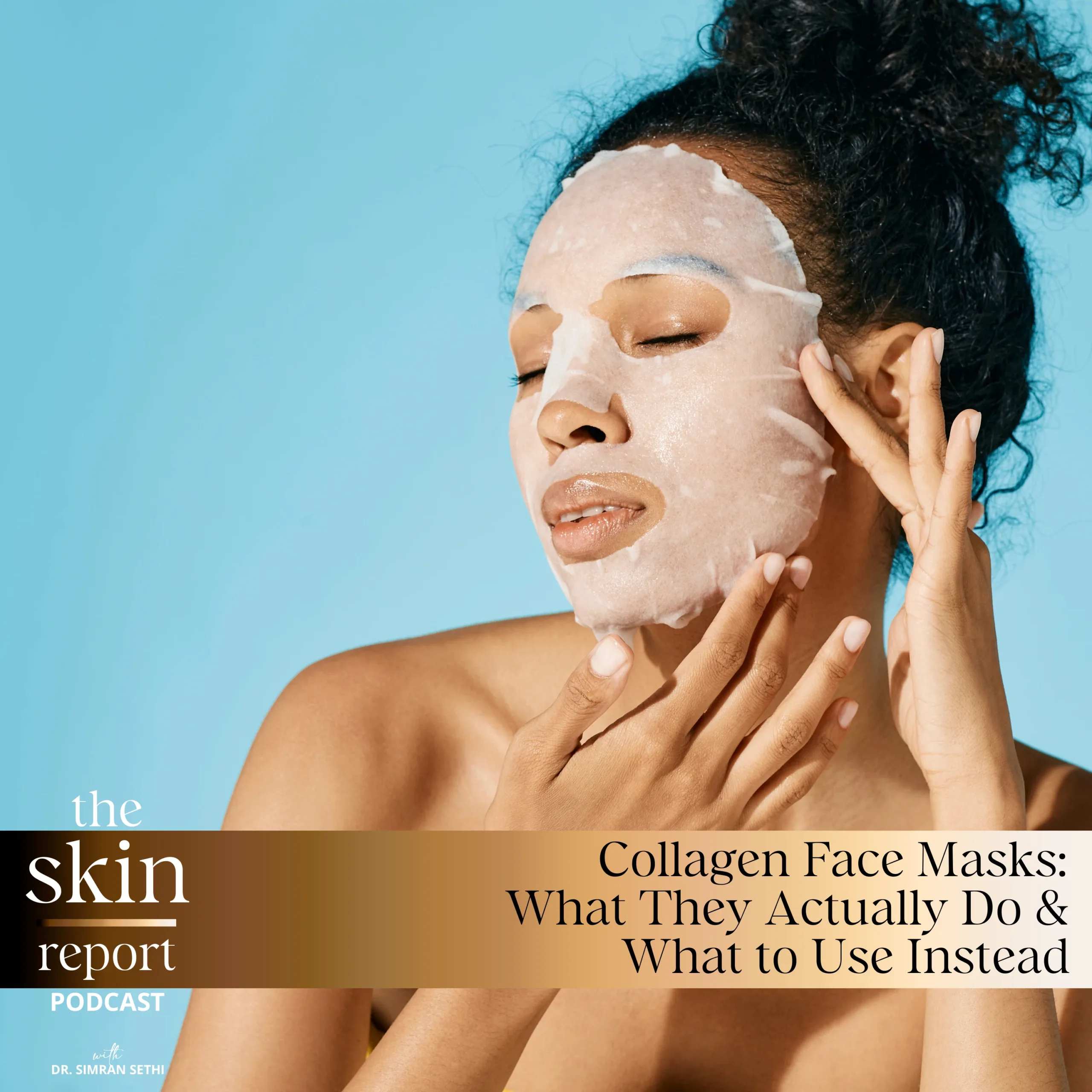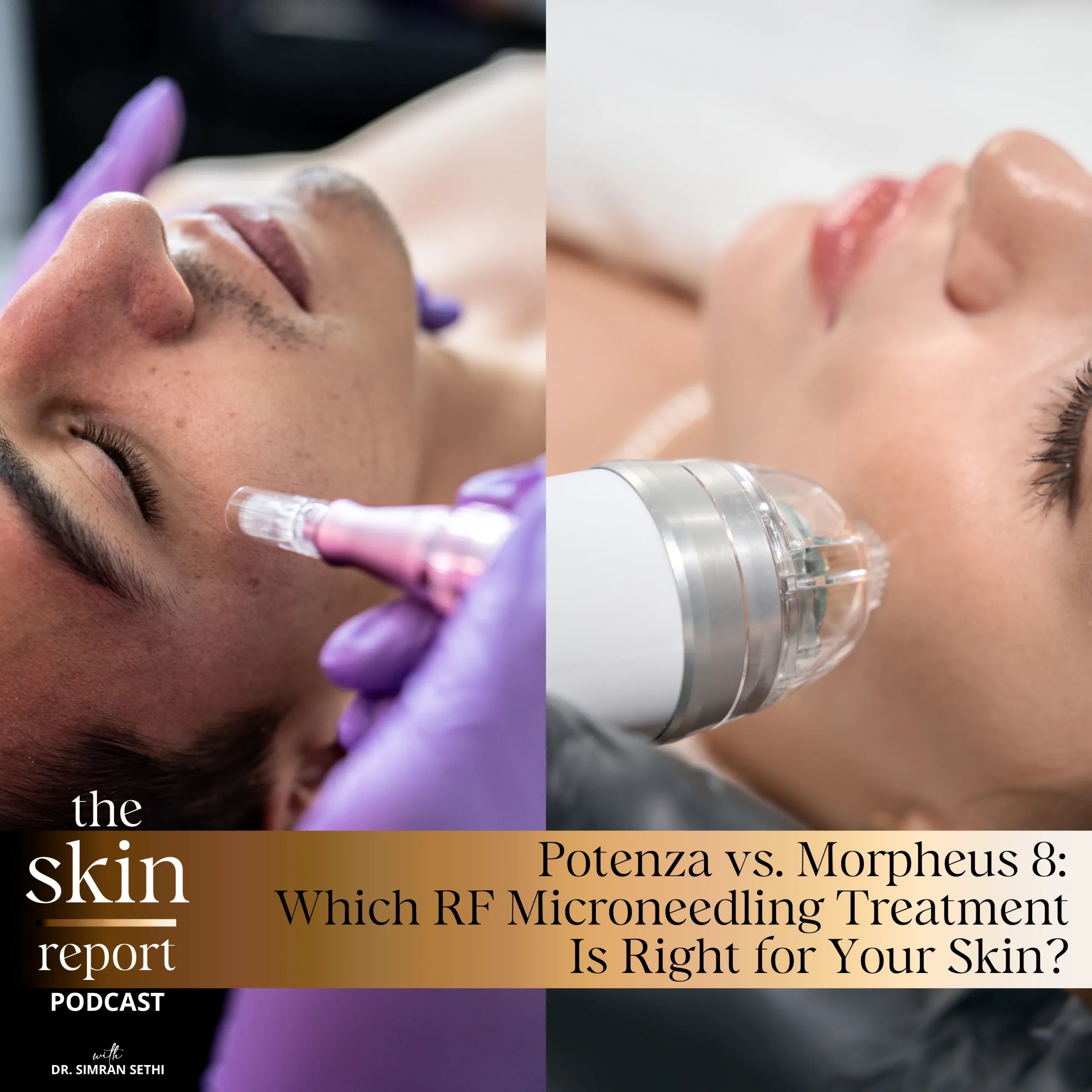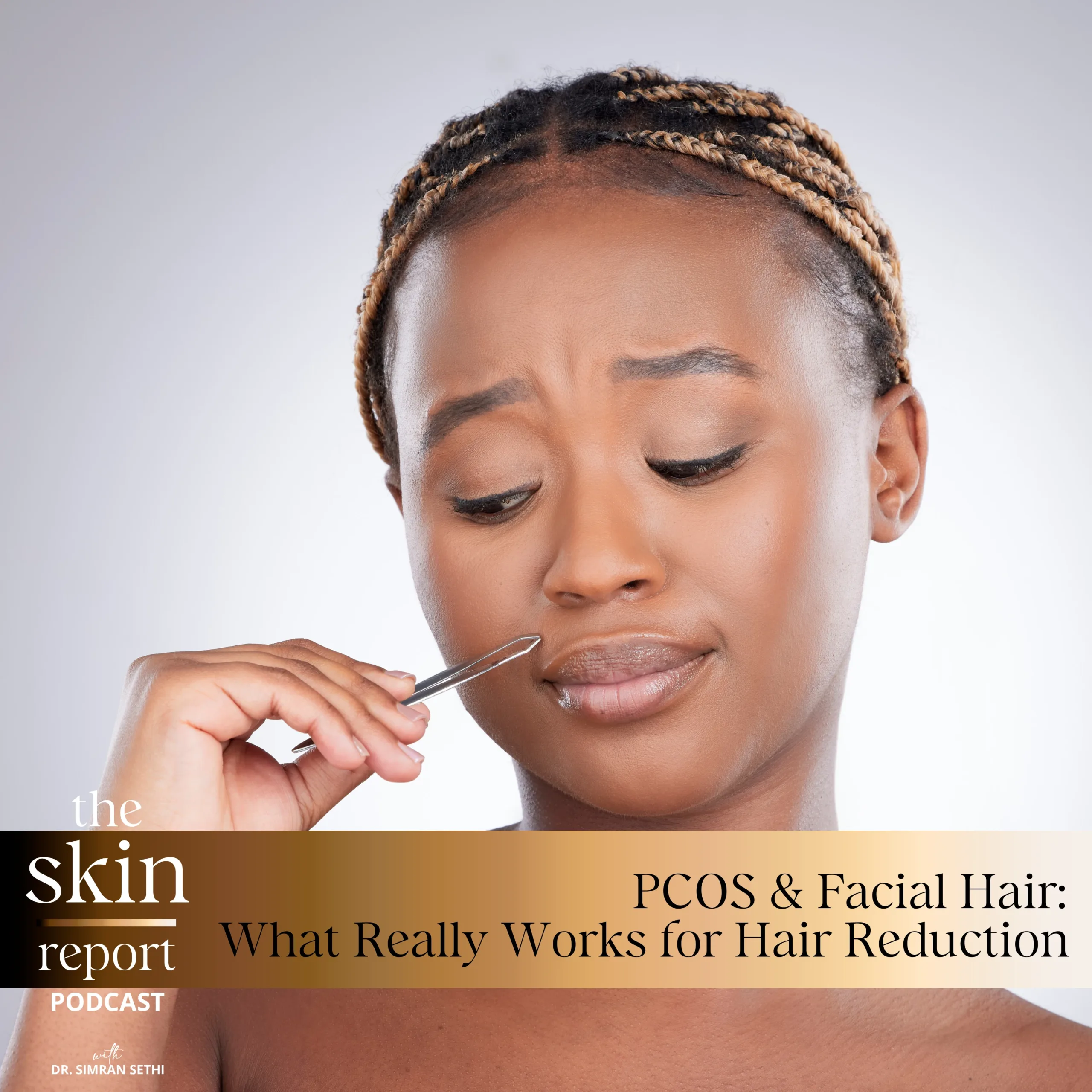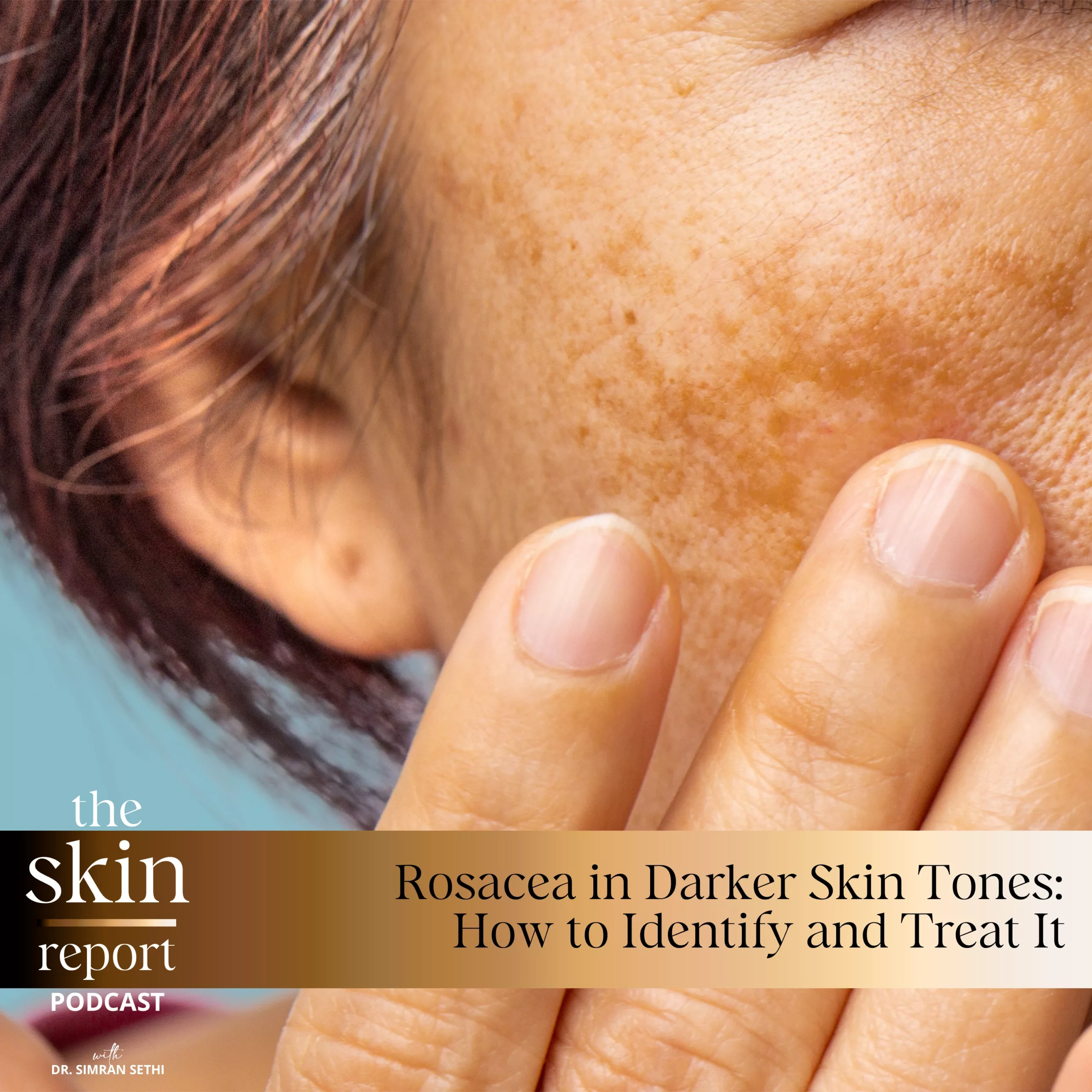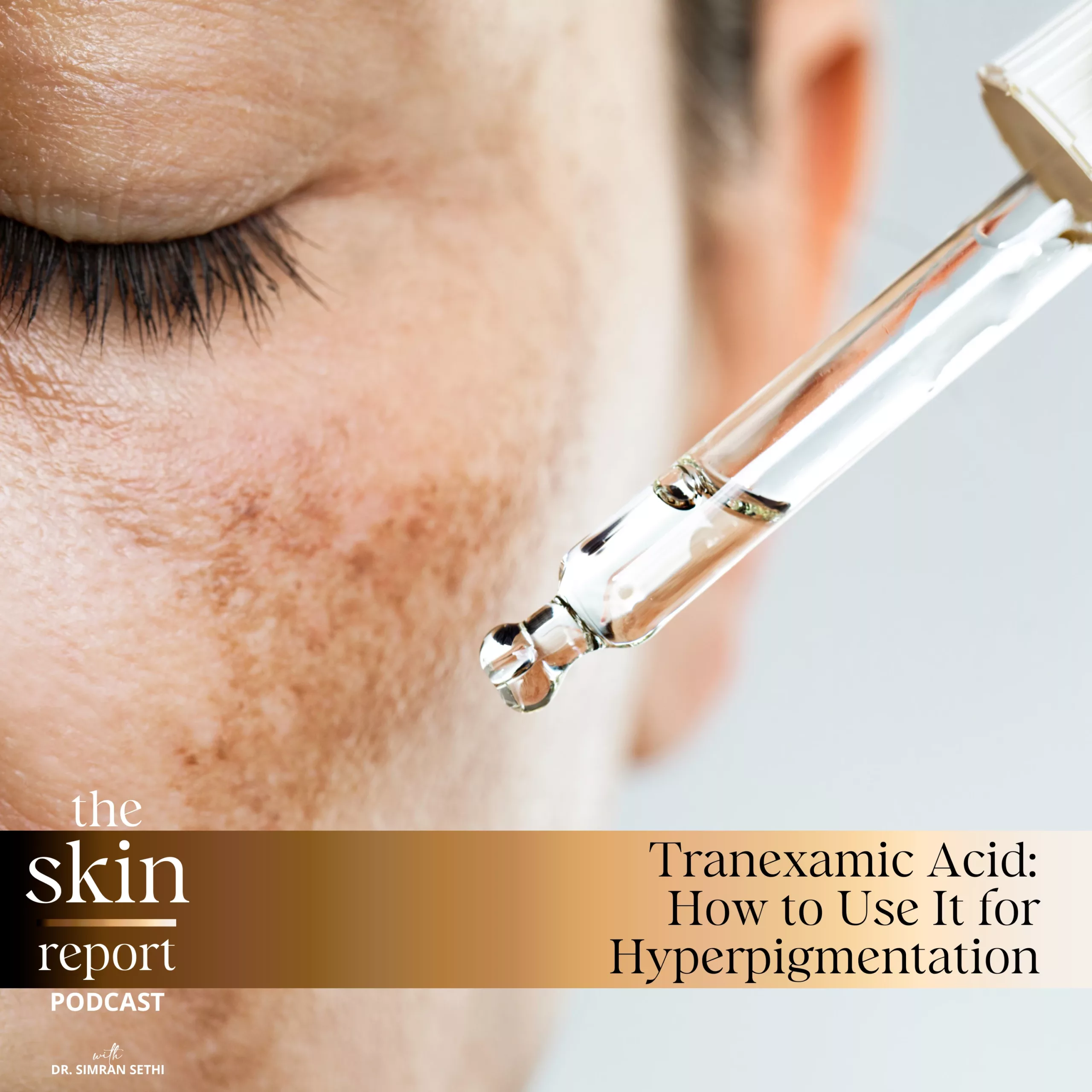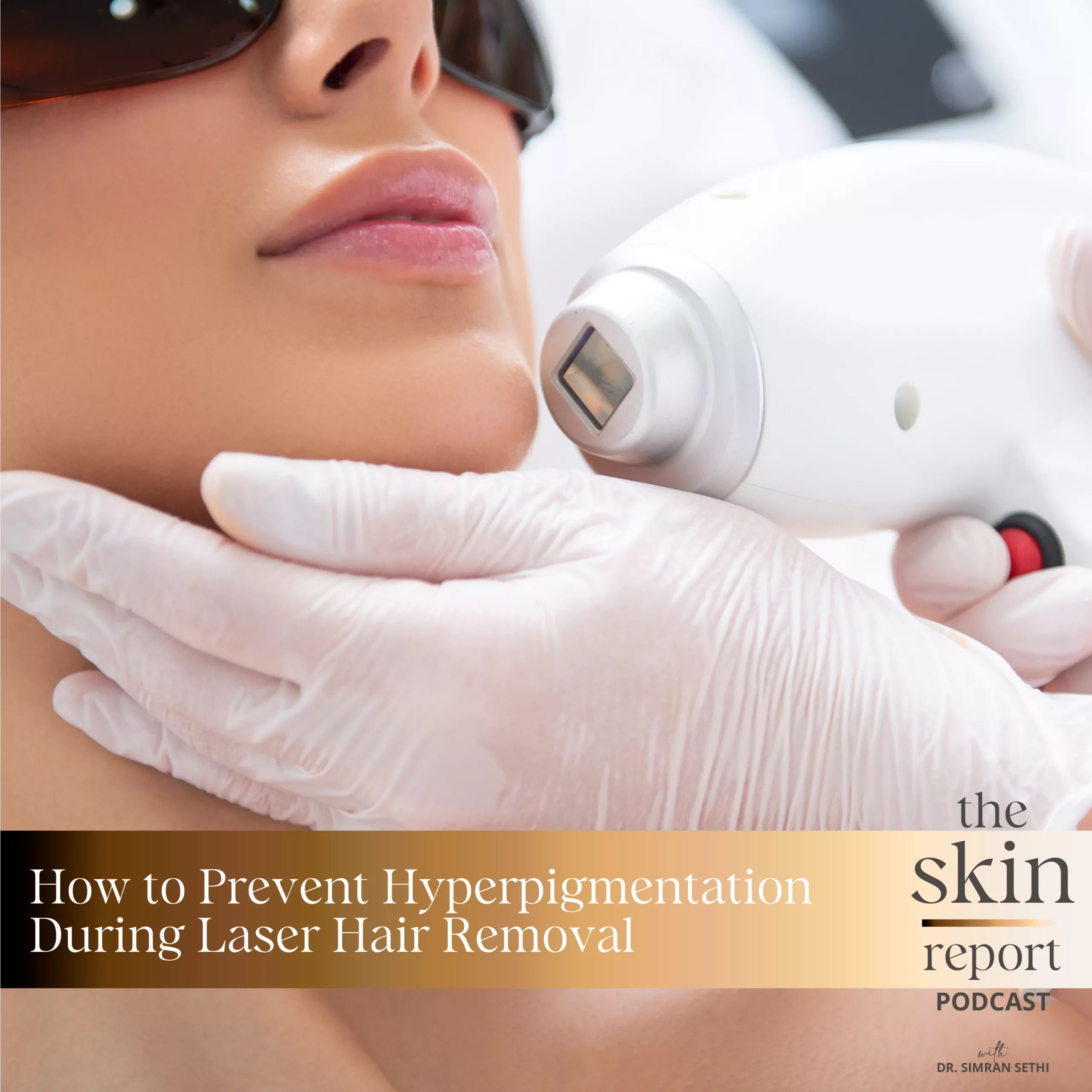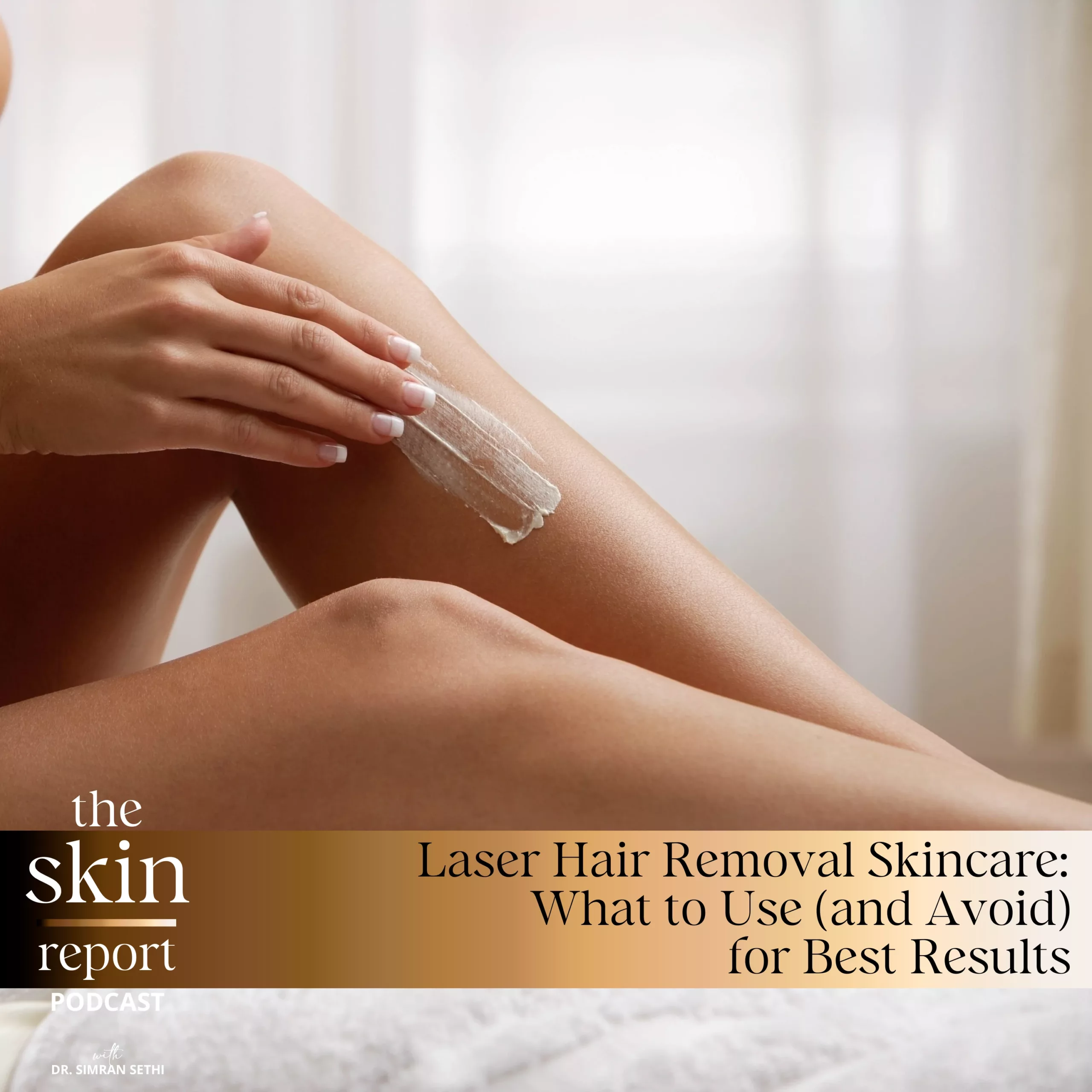Menopause Skincare 101:
How to Care for Dry, Aging Skin
In this episode of The SKIN Report, Dr. Sethi dives into the skin changes that occur during perimenopause and menopause—and how to manage them with the right skincare routine. As estrogen and progesterone levels decline, many women experience dry, dull, and fragile skin. But with the right ingredients and habits, you can maintain a healthy, hydrated glow.
Dr. Sethi explains:
✅ Why hormone changes affect skin hydration and collagen
✅ How to choose the best moisturizers for aging skin
✅ What ingredients like retinol and hyaluronic acid actually do
✅ Why estrogen creams may be worth considering—and when to avoid them
✅ What to steer clear of (including coconut oil and over-exfoliation)
👉 Whether you’re in your 40s or just starting to see skin changes, this episode is filled with science-backed skincare strategies to help you feel confident in your skin again.
Exclusive Offer for the Skin Report Audience:
Use SKINREPORT20 in the shopping cart to receive 20% discount
LEARN MORE!
The Skin Report Podcast : Subscribe and Download!
Skin By Dr. Sethi – Blog
Skin By Dr. Sethi – Skincare
Skin By Dr. Sethi – Beauty Instagram
Dr. Sethi’s Medical Spa
Dr. Sethi’s Medical Spa – Instagram
Hi, I am Dr. Sethi and welcome to the Skin Report. We are going to talk about menopause, perimenopause and what skincare is essential when you’re going through these hormone transitions. I’m going to first describe what are the skin changes occurring during these transitions, and then go into some key active ingredients and what kind of things to actually avoid in your skincare routine if you are going through perimenopause or menopause. Perimenopause or menopause is a time when a woman’s ovaries are not producing estrogen and progesterone like they did in her younger years. When we think of menopause, we generally think of a period of maybe a year when suddenly your hormones have shifted and you are no longer having a period, menses, not ovulating and so forth. However, the perimenopausal and menopausal state can last for up to 10 years.
And it’s not something that happens generally all of a sudden, there are a lot of hormone changes happening in the years leading to menopause. And I know this because I’m an internal medicine physician, I’m board-certified in internal medicine and have practiced primary care internal medicine in the US, and have worked with women during these transitions in their bone health and all the other changes that are happening, not just in skin and aesthetics. But generally women will come in their early 40s and describe changes in their skin. And I think now that when we look at menopause, I do think that a lot of the changes in perimenopause that first happen happen in the skin. And women will come in their early 40s and describe how their skin has just become a little drier than it used to be. And some of them actually are happy about that because they used to have very oily skin that was acne-prone and now they feel like their skin is more balanced.
Those with more normal skin or dry skin will experience more dryness, and they start also noticing that there’s a little less tightness in their skin. Now, that doesn’t mean they’re in menopause, but they’re leading up to it. And that’s because our estrogen and progesterones are starting to decrease. Our ovaries haven’t come to a complete halt yet, but the levels of estrogen and progesterone circulating our body are growing down and that causes various changes in the skin. Number one, the ability to make collagen. As we age, we make less collagen and we have less skin cell turnover. When you have less skin cell turnover, you are not going to correct the damage on your skin as rapidly. When we’re in our teens and early 20s, we are correcting damage from environmental pollution, from the sun in 10 days to two weeks. When we get into our 30s, that rate of cell turnover and correction of damage goes down to every six weeks or so. But when we get into our 40s and above, it takes eight to 12 weeks to make new skin and correct damage from UV exposure and pollution.
Now, estrogen and progesterone are a big part of that equation. And when you are going through this perimenopausal transition, you can go to your doctor and get blood levels of estrogen and progesterone tested but those blood levels won’t tell us very much because hormones don’t have to be elevated or decreased in large amounts to show a change in what is happening in your body. So going to your doctor and saying, “Hey, I feel like my skin is dry. I need to get tested for menopause,” is likely going to be very low yield. It may not show anything. So pay attention to symptoms. So first we talked about reduction in collagen production. The other big thing that is happening with a reduction in these hormones is your ability to hold on to moisture in the skin. In dermatology, we refer to this as transepidermal water loss.
So typically we are warmer than the environment around us, so we are always losing water to the air around us. Our skin naturally has hyaluronic acid, ceramides. Basically, it has the ability to hold onto that water. And as we age and we see a reduction in the amount of progesterone and estrogen, the ability to hold onto that water decreases. What is most clear to women as they get closer to menopause is how much drier their skin gets and fragile it gets, and that’s because we need water to keep our skin barrier intact. And so not only does that water content help with hydration, the lack of water causes fragility so the skin is going to be more prone to fine lines and wrinkles. And third, estrogen is really important in helping our skin secrete sebum.
So, again, that goes back to this concept of hydration. And generally when you are looking for a good moisturizing agent in that hormone transition, you should be looking for things that contain lipids or fats because our own skin’s ability to secrete sebum or lipids has gone down. Now that we’ve talked about all the different changes that are occurring during perimenopause and menopause, because of a decrease in estrogen and progesterone, let’s talk about skincare actives that you should be incorporating into your skincare routine. Number one, let’s talk about what active will help with skin cell turnover, and that’s retinol. Retinol increases your skin cell turnover, making you make new skin, new collagen at the same rate you were making when you were younger. Which means it corrects errors in your skin or damage in your skin faster. This will help with reduction of hyperpigmentation, fine lines, and improve the skin’s elasticity.
Second, we talked about hydration and how the skin is not able to hold on to moisture like it used to when it had more estrogen and progesterone circulating. For improvement in hydration, you need to take a two-pronged approach. First moisturize with a lipid-rich moisturizer, and that’s because the skin is not producing as much sebum as it used to. Hydrating with a moisturizer that’s largely water-based is not going to replenish the oils that you’re missing because of the reduced estrogen. So a lipid-based moisturizer is essential and choose a moisturizer that has lipids like glycolipids, phospholipids, vitamin E, which is a great way to replenish the lipids in your skin because these match what we naturally make. If you use lipids or oils that are larger than what your skin naturally holds, you’re just going to have those oils sitting on top of your skin and making the skin look greasy and trapping dirt and debris.
Next, let’s talk about sealing your moisture. Remember, there are a lot of molecules of hyaluronic acid naturally in our skin and they decrease with age. The job of these molecules is to hold onto moisture. So after you’ve applied a lipid-rich moisturizer, apply a hyaluronic acid serum on top of that to seal your moisture in. This will prevent the loss of moisture in your skin and the loss of the moisturizer that you’ve applied. And that’s also why when people apply a moisturizer, they notice just a few hours later, they feel dry again. By applying a hyaluronic acid serum that’s a high-dose hyaluronic acid serum on top of your moisturizer, you’re going to prevent the loss of moisture from your moisturizer and from your skin, and you’ll notice that you are not going to feel dry a few hours after applying it. Before I go into what kind of skincare active to avoid in your regimen during menopause and perimenopause, let me make a little note about estrogen creams.
Estrogen creams, especially a 0.3% estriol cream, has been shown to replenish the skin with estrogen and up-regulate all the great things that estrogen normally does in our skin. That means it improves hydration, improves elasticity and collagen production. I highly recommend an estriol cream if you can use it because this will replenish the loss of estrogen in your skin. And actually, there are some skin care products with estrogen on the market that show that that estrogen does not go into the bloodstream. So if you do have a history of breast cancer, uterine cancer, do ask your doctor if it is safe for you to use this estrogen cream on your skin. But there are some on the market that actually have been studied to not go into the bloodstream, so it’s potentially possible that you could use them even if you cannot use estrogen as a form of hormone replacement.
Now, let’s go into things that you should avoid when you are going through the perimenopause and menopause transition in your skin car routine. Number one, avoid applying oils to your skin. I know I talked about lipid-rich moisturizing earlier, but those lipids have to match the lipids that naturally are found in your skin. Applying oils like coconut oil, almond oil are not going to absorb into your skin. And likely these oils will sit on your skin, create a greasy layer and interfere with makeup application, sunblock application, and trap dirt and debris. So applying oils directly to your skin that are not manufactured or designed for skin care use is not a good idea because it’s only going to do all the negative things oils do on your skin. Next, let’s talk about exfoliation. Typically, when your skin starts getting dry, you are likely going to under-exfoliate or stop exfoliating entirely.
But when you are undergoing all these hormonal changes, it is still important to exfoliate but you should exfoliate appropriately. So dry skin typically will cause debris or old skin to just sit on the surface of your skin. This makes the skin look dull, and it also affects the penetration of any skin care products that you apply. Exfoliation is an important part of our skin cell cycle, and it’s important to exfoliate in a two-pronged approach. First, mechanical exfoliation and a little bit of a chemical exfoliant. Mechanical exfoliation refers to using mechanical scrubs or small particles to slough off dead skin from your skin’s surface, and this is very effective at removing those dead skin cells. But sometimes people can over-exfoliate. In menopause, perimenopause avoid exfoliating with physical brushes, exfoliating cloth, or any kind of tool to exfoliate. Instead, go to small particle exfoliating facial scrubs that you can just apply in your fingers, scrub on your face so that you can just mechanically remove any dirt and debris.
Second, you have to also exfoliate your pores and doing this with a mechanical scrub can be a bit more challenging because it could break your skin barrier down. Instead, use a chemical exfoliant like a low percentage glycolic gel or some sort of botanical chemical exfoliant. Exfoliation daily is not a good idea when your skin is on the drier side, so keeping your exfoliation down to three to four times a week is ideal at keeping your skin polished, allowing good penetration of skincare actives without breaking the skin barrier. I hope this episode is informative. If you are confused about what skincare routine to have during menopause, I do have a menopause bundle in my skincare line at skinbydrsethi.com. If you have any questions or comments, please leave them in our comments below. And remember, subscribe, turn on your notification bell so that you always know when we have new content.


